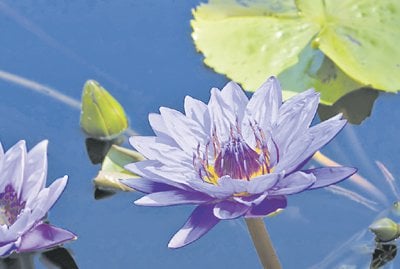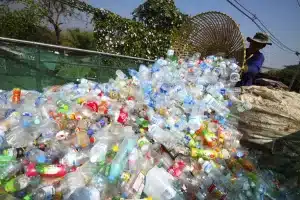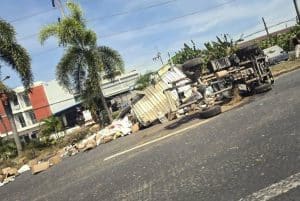Phuket Gardening: Ecstatic aquatic

PHUKET: When I first came to Phuket, it was well nigh impossible to find ceramic pots that were completely waterproof. Indeed, I recall filling the drainage holes in glazed pots with cement in order to prevent leakage.
I was reminded of this recently by Richard, a fellow Englishman, who is marketing a range of giant ceramic pots, so large that they cannot be thrown or spun, but are crafted into molds by traditional methods, covered with a ceramic glaze and then fired in a wood-burning furnace. Beautiful and unique. Richard writes:
“I would appreciate any thoughts you might have about where I can research the best plants for these sorts of pots. I am particularly interested in aquatic plants that can survive outside [in] this climate.”
As far as I am aware, there is no single book that deals exclusively with water-loving plants, but William Warren’s Tropical Garden Plants (Thames and Hudson) has a section on the topic. So here is my own threepenn’orth.
The shape of the container is absolutely crucial. Many of Richard’s pots are vase-shaped – either broadly oval, or more slender in style. Consequently, the rims are much narrower than the main body, so one has to consider plants that require relatively little surface space and which will, by growing tall, gracefully complement the design of the container.
One obvious choice is the water canna (thalia geniculata), a plant with elegant reed-like stems and bright green, large, ovate leaves that appear at the sides and tops of the stalks.
Grown mainly for its foliage, the water canna also produces dangling clusters of mauve flowers on elongated stems well above the leaves. A particularly attractive variety has reddish stalks and veining on the foliage.
Thalia geniculata will grow completely immersed in water, and is best established by being rooted in the glutinous mud sold in most good garden centers. Since it will rise four or five feet above its container, it will not look out of place in a large jar or vase-shaped pot with a relatively narrow rim. Moreover, it loves full sun. Witness the water canna’s presence on the front patios of many Thai homes. The only downside is that old leaves quickly discolor and will need to be removed with secateurs.
Even more familiar is the lotus, a plant sacred to both Buddhists and Hindus. Like the water canna, it is a sun-worshiper, will grow with its roots submerged in water and does best when constrained by a narrow-rimmed pot. While nelumba nucifera will probably not grow above four feet tall, its magnificent buds and flowers – either pink or white – are borne on long stalks some distance above the water.
Given the right muddy conditions, including fertilizer in tablet form, it will bloom repeatedly and produce masses of leaves. Round and vividly green, the leaves are covered with microscopic hairs that cause raindrops to roll off them. A must-have container plant.
Water lilies are probably the best known of all water plants, for the botanical family of nymphaeceae is huge, and its members are familiar presences wherever you hail from. They come in every color of the rainbow, and the spectacular flowers lose nothing in comparison with those of the lotus. But it will only bloom freely, given a sunny location and ample mud around its spreading rootstock.
Since both pads and blooms float on the surface of the water, it requires a very different kind of habitat. In principle, the wider the pot, the better for the lily. And, because the flowers are low to the water, the vessel needs to be at or near ground level to achieve maximum visual impact. No wonder the water lily is the preferred choice of pond owners everywhere.
Tip of the week – Trace Elements and Healthy Plants
Every gardener understands that plants, like humans, require nutrients to stay alive and well. The three main needs are for nitrogen (N), phosphorus (P), and potassium(K).
These are present in the soil, especially top soil, and in additional material such as
compost or chicken manure.
In addition, plants may require monthly applications of fertilizer, which is normally obtained in granular or liquid (more expensive) form, and is most commonly available as an equal balance of the three main minerals (15/15/15 ).
But that is not the end of the story: trace elements in minute quantities – boron, manganese, iron or zinc assist healthy growth. Happily, they are usually present in rich soil. Plants lacking these elements, especially in pots, may reveal their absence by yellowing foliage or stunted growth. They should benefit from a top dressing of humus-rich soil, manure or compost.
If you have a question or a garden that you would like featured, you can email the author here.
Keep checking our online Phuket Lifestyle pages or join our Facebook fan page for regular gardening features and tips.
— Patrick Campbell
Latest Thailand News
Follow The Thaiger on Google News:


























